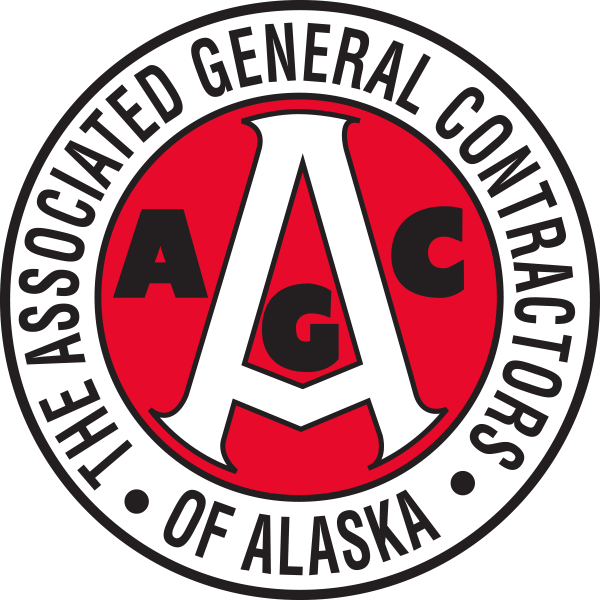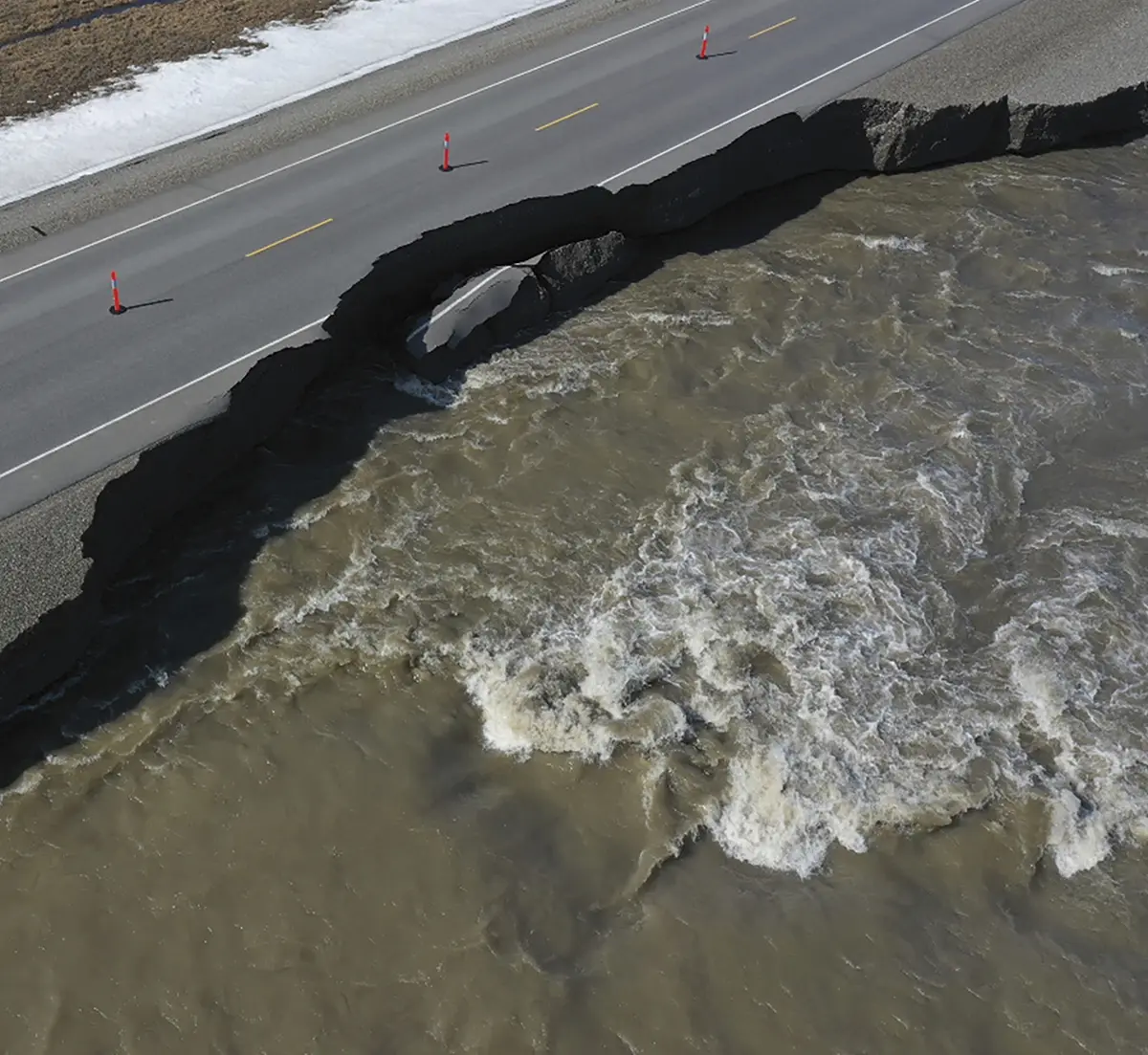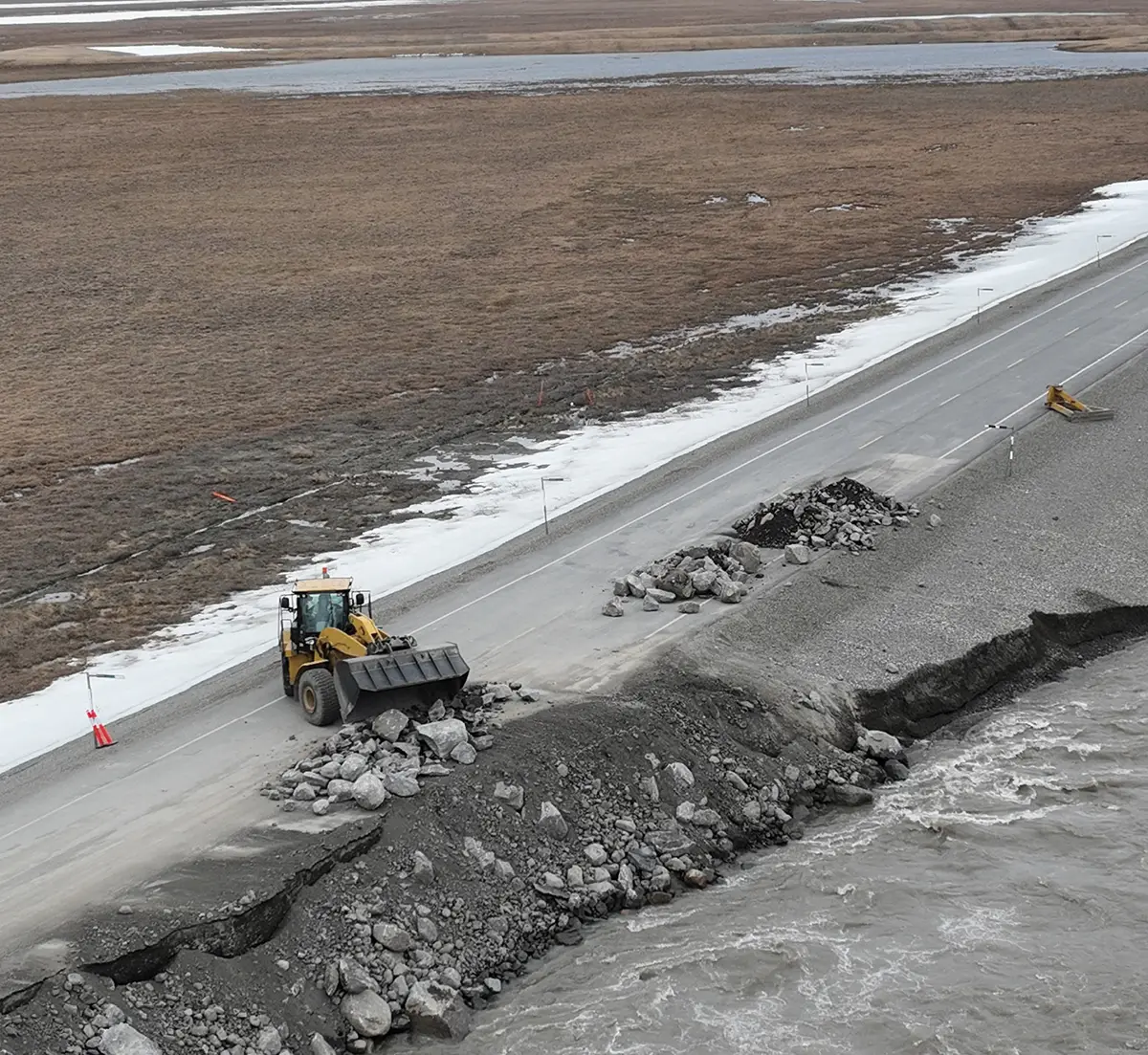
Update
s the sole means of overland transport between Fairbanks and Deadhorse, the 414-mile Dalton Highway, also known as the Haul Road, is a vital link for resource development operations on the North Slope, allowing large commercial vehicles to deliver materials, equipment, and other supplies to mining, oil and gas, and support services companies.
When on June 7 the Sagavanirktok, or Sag, River washed out a portion of the highway ten miles south of Deadhorse at Milepost 403.5, it risked disrupting not just ongoing projects beyond the washout but the businesses and services that support them as well.
A quick partnership between the State of Alaska Department of Transportation and Public Facilities, or DOT&PF, which owns and maintains the highway; Cruz Construction, an Associated General Contractors, or AGC, of Alaska member; and Alyeska Pipeline Service Company allowed the highway to remain open to single-lane traffic while repairs were happening. It was fully reopened within a month.
“I’m not aware of any businesses or services that were impacted by the temporary damage and repairs at Dalton Milepost 404,” says Michael Lund, construction engineer for the DOT&PF’s northern region. “Staff with maintenance and operations and our contractor, Cruz Construction, responded to the event quickly and saved the road and limited impacts.”

“It was just an unusual year, with a big ice shelf out there,” Jones explains. “The water is kind of channeled through to the main channel now, but that section has ice that has remained all summer long.”
With its path between the ice and the main channel blocked, the water instead flowed around the ice shelf and pooled toward the river side of the highway, creating a huge lake, he says. It then ran alongside the highway until a slight elevation change allowed it to speed up over a portion of the tundra and eat away the side of the highway, eventually eroding it all the way to the centerline.
Jones says Cruz workers, who were working on other projects along the highway, immediately notified DOT&PF when they first noticed the erosion on June 6.
“We reached out to the state to see if they wanted help trying to save the road, and of course, they wanted some help,” he says. “We didn’t have contracts in place, we didn’t have anything in place. We just knew that the road needed to be fixed and we were willing to make that happen.”
“Rock up on the North Slope is very hard to find,” he explains. “You have to go clear to the mountain to find big rocks like the ones we needed to stop the flooding. So, the challenge was finding enough rock and hauling it quickly enough, because it was so far away.”
Cruz began hauling rock from its existing pit 105 miles south of the erosion site. It had as many as fifteen trucks, which it pulled from a project at Slope Mountain, hauling two loads per day. Crews from its North Slope operations worked to place the rocks and divert the water away from the highway.
“We would have lost that whole section of highway, and Deadhorse would have been cut off, if we’d gone even one day without hauling,” Jones says. “But we were barely keeping up. We would fill in a hole and then it would change the pattern of the water, and then the water would start digging into the road at a different spot. So we knew we needed to haul rock that was a lot closer to keep up with it.”
— Matt Jones, North Slope operations manager for Cruz Construction
“They allowed us to use their rock as long as we replaced it,” he says. “That partnership was key to fixing the road and having stockpiles of rock closer. Once we did that, we were able to keep up with erosion and keep the road.”

“As traffic showed up, our people on-site would shuttle them through,” Jones says. “Even when the road was technically closed, we were still trying to get traffic through when we knew it was safe.”

Jones says though Cruz Construction was responsible for the physical work of repairing the road, it was a group effort.
“It was DOT&PF, Cruz, and Alyeska working together to save the road,” he says of the estimated $3.5 to $4 million project. “Partnering with Alyeska was key in saving the road. They had the material we needed much closer than what the state had available.”